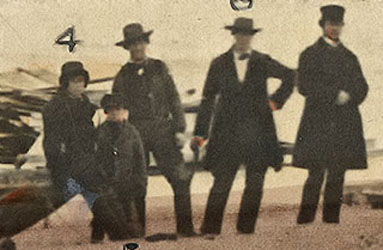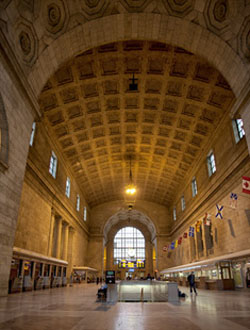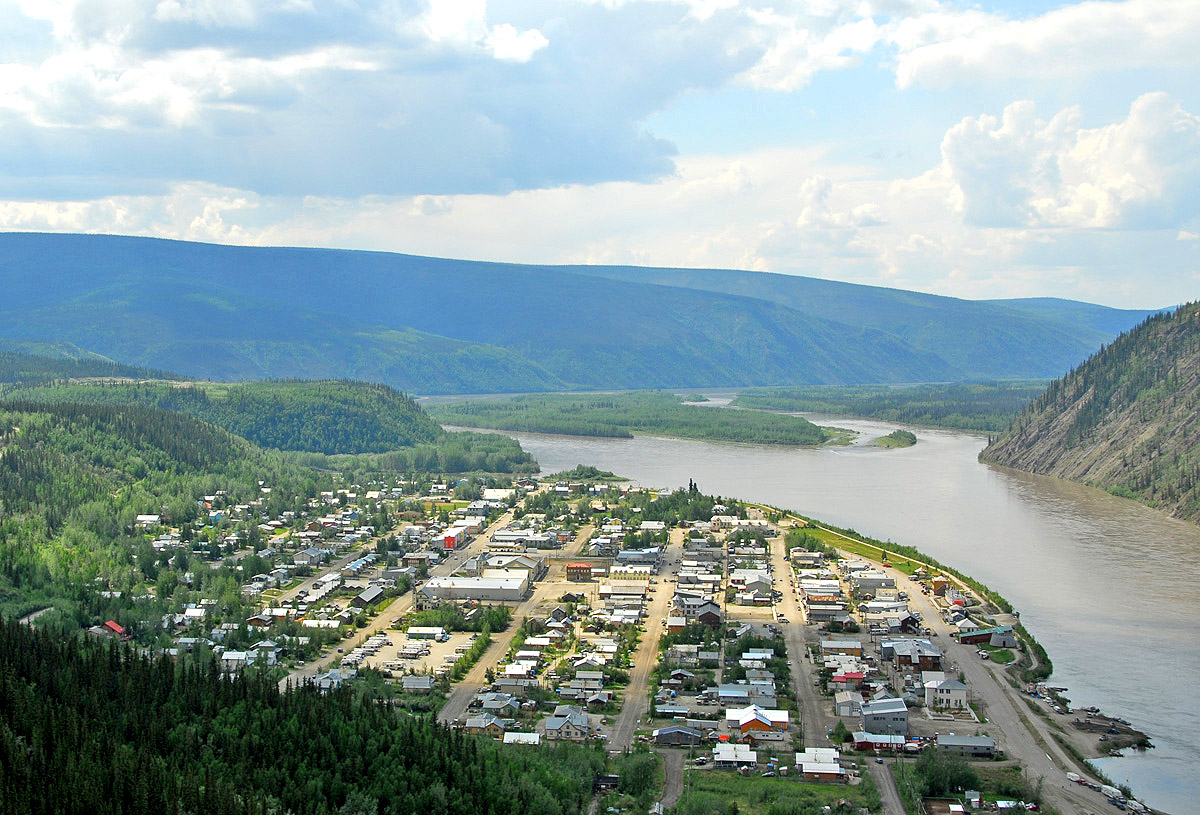Browse "Places"
-
Article
Toronto Feature: Todmorden Mills
This article is from our Toronto Feature series. Features from past programs are not updated.
"https://d2ttikhf7xbzbs.cloudfront.net/media/media/f4ef7c38-690c-417f-a5f6-258107a219ad.jpg" // resources/views/front/categories/view.blade.php
https://d2ttikhf7xbzbs.cloudfront.net/media/media/f4ef7c38-690c-417f-a5f6-258107a219ad.jpg
-
Article
Toronto Feature: Tommy Thompson Park
This article is from our Toronto Feature series. Features from past programs are not updated.
"https://d2ttikhf7xbzbs.cloudfront.net/media/media/9f14c928-d1e3-40ad-8d1c-9910f990dd54.jpg" // resources/views/front/categories/view.blade.php
https://d2ttikhf7xbzbs.cloudfront.net/media/media/9f14c928-d1e3-40ad-8d1c-9910f990dd54.jpg
-
Article
Toronto Feature: Toronto City Hall
This article is from our Toronto Feature series. Features from past programs are not updated.
"https://d2ttikhf7xbzbs.cloudfront.net/media/media/6f59d9c0-e877-4044-9487-448ab1aeb1dc.jpg" // resources/views/front/categories/view.blade.php
https://d2ttikhf7xbzbs.cloudfront.net/media/media/6f59d9c0-e877-4044-9487-448ab1aeb1dc.jpg
-
Article
Toronto Feature: Toronto Harbour
This article is from our Toronto Feature series. Features from past programs are not updated.
"https://d2ttikhf7xbzbs.cloudfront.net/media/media/14b198eb-b009-4209-91af-e925e00d648a.jpg" // resources/views/front/categories/view.blade.php
https://d2ttikhf7xbzbs.cloudfront.net/media/media/14b198eb-b009-4209-91af-e925e00d648a.jpg
-
Article
Toronto Feature: Toronto Harbour Commission
This article is from our Toronto Feature series. Features from past programs are not updated.
"https://d2ttikhf7xbzbs.cloudfront.net/media/media/a4858e7c-509f-4c0e-8d26-dbe823623e70.jpg" // resources/views/front/categories/view.blade.php
https://d2ttikhf7xbzbs.cloudfront.net/media/media/a4858e7c-509f-4c0e-8d26-dbe823623e70.jpg
-
Article
Toronto Feature: Toronto Islands
This article is from our Toronto Feature series. Features from past programs are not updated.
"https://d2ttikhf7xbzbs.cloudfront.net/media/media/7d19fc85-a8e8-40c0-b6c0-e4cb2f309c2d.jpg" // resources/views/front/categories/view.blade.php
https://d2ttikhf7xbzbs.cloudfront.net/media/media/7d19fc85-a8e8-40c0-b6c0-e4cb2f309c2d.jpg
-
Article
Toronto Feature: Union Station
This article is from our Toronto Feature series. Features from past programs are not updated.
"https://d2ttikhf7xbzbs.cloudfront.net/media/media/04572b95-83d5-468e-b15a-c406e0d5e9da.jpg" // resources/views/front/categories/view.blade.php
https://d2ttikhf7xbzbs.cloudfront.net/media/media/04572b95-83d5-468e-b15a-c406e0d5e9da.jpg
-
Article
Toronto Feature: Ward's Island
This article is from our Toronto Feature series. Features from past programs are not updated.
"https://d2ttikhf7xbzbs.cloudfront.net/media/media/028494a6-3cf1-4af8-9095-793de234e3c1.jpg" // resources/views/front/categories/view.blade.php
https://d2ttikhf7xbzbs.cloudfront.net/media/media/028494a6-3cf1-4af8-9095-793de234e3c1.jpg
-
Article
Toronto Feature: Wesley Building
This article is from our Toronto Feature series. Features from past programs are not updated.
"https://development.thecanadianencyclopedia.ca/images/tce_placeholder.jpg?v=e9dca980c9bdb3aa11e832e7ea94f5d9" // resources/views/front/categories/view.blade.php
https://development.thecanadianencyclopedia.ca/images/tce_placeholder.jpg?v=e9dca980c9bdb3aa11e832e7ea94f5d9
-
Article
Toronto Feature: Wychwood Park
This article is from our Toronto Feature series. Features from past programs are not updated.
"https://d2ttikhf7xbzbs.cloudfront.net/media/media/e150c523-b139-4758-aa53-6c3ed7d3ec25.jpg" // resources/views/front/categories/view.blade.php
https://d2ttikhf7xbzbs.cloudfront.net/media/media/e150c523-b139-4758-aa53-6c3ed7d3ec25.jpg
-
Article
Toronto Islands
The Toronto Islands, 332 ha, are an archipelago of 15 islands in Lake Ontario about 1.6 km south of downtown Toronto.
"https://d2ttikhf7xbzbs.cloudfront.net/media/media/d6e81d83-d5f3-4859-b3a1-becbd25303b3.jpg" // resources/views/front/categories/view.blade.php
https://d2ttikhf7xbzbs.cloudfront.net/media/media/d6e81d83-d5f3-4859-b3a1-becbd25303b3.jpg
-
Article
Music in Toronto
For much of Toronto’s early history, the dominant cultural force in the predominantly Protestant enclave was church music. By the beginning of the 20th century, Toronto was known as “the choral capital of North America.” By that time, the Toronto Mendelssohn Choir and the Toronto Symphony Orchestra were well established. The city has also been an epicentre of piano building, music publishing, and the English-language recording and broadcasting industries. In addition to classical and choral music, Toronto has been a national centre for jazz artists, folk musicians, rock ‘n’ roll bands and R&B and hip hop artists. The city is home to the headquarters of many major record labels and cultural institutions, as well as some of the country’s oldest and best-known concert halls.
"https://d2ttikhf7xbzbs.cloudfront.net/media/media/de6dd69e-8db5-4371-b208-7e61f4fd3b6d.jpg" // resources/views/front/categories/view.blade.php
https://d2ttikhf7xbzbs.cloudfront.net/media/media/de6dd69e-8db5-4371-b208-7e61f4fd3b6d.jpg
-
Article
Toronto Subway
The Toronto subway is part of a larger public transportation network, including streetcars, buses and light rapid transit, run by the Toronto Transit Commission (TTC). It opened on 30 March 1954, making it Canada’s first subway. Since then, it has grown from a single, 12-station line running 7.4 km beneath Yonge Street to a three-line system encompassing 70 stations running 70.1 km. In 2023, the TTC recorded 396.3 million passenger trips on the Toronto subway.
"https://d2ttikhf7xbzbs.cloudfront.net/media/home-page-images/a0103c46-7dc7-4df0-b488-fdc41e4de918-resize.jpg" // resources/views/front/categories/view.blade.php
https://d2ttikhf7xbzbs.cloudfront.net/media/home-page-images/a0103c46-7dc7-4df0-b488-fdc41e4de918-resize.jpg
-
Article
Tr'ondëk-Klondike
Tr'ondëk-Klondike is a living, cultural landscape located in the subarctic zone of Northwestern Canada. In September 2023, Tr'ondëk-Klondike was officially inscribed on the UNESCO World Heritage Sites list. Located within the ancestral homeland of the Tr'ondëk Hwëch'in First Nation, eight locations comprise the Tr'ondëk-Klondike World Heritage site. These locations illustrate the transformation of the landscape from its pre-colonial state due to European settlers' use and the adaptations of Indigenous peoples to colonialism.
"https://d2ttikhf7xbzbs.cloudfront.net/Tr'ondëk-Klondike/Dawson.jpg" // resources/views/front/categories/view.blade.php
https://d2ttikhf7xbzbs.cloudfront.net/Tr'ondëk-Klondike/Dawson.jpg
-
Article
Tracadie-Sheila
Tracadie-Sheila, NB, incorporated as a town in 1992, population 4933 (2011c), 4479 (2006c). The Town of Tracadie-Sheila is situated on the Gulf of ST LAWRENCE, 83 km southeast of BATHURST.
"https://development.thecanadianencyclopedia.ca/images/tce_placeholder.jpg?v=e9dca980c9bdb3aa11e832e7ea94f5d9" // resources/views/front/categories/view.blade.php
https://development.thecanadianencyclopedia.ca/images/tce_placeholder.jpg?v=e9dca980c9bdb3aa11e832e7ea94f5d9
